Polestar confirmed last year that the 5 is aiming for power outputs of up to 874bhp
Porsche Taycan rival to get ultra-stiff platform with brand new battery tech – and we got a ride in it
The Polestar 5 has been revealed ahead of its 2025 launch, touting brand new rapid charging technology and huge performance potential as a “company-defining project”.
The new Porsche Taycan rival, unveiled at the firm’s ‘Polestar Day’ in Los Angeles, is the first model to be built on a new scalable aluminium architecture that’s bespoke to Polestar and has been engineered in the UK at the firm’s development centre at Horiba Mira.
The 5 is one of a series of new Polestars that will arrive over the next two years, including the new Polestar 3 and Polestar 4 SUVs that will launch in 2024. The 5 will follow in 2025 and then its architecture will be used for the new Polestar 6 roadster in 2026.
Polestar has confirmed the electric car‘s new rapid charging technology allows for 100 miles of range to be added in just five minutes without degrading the quality of life of the battery.
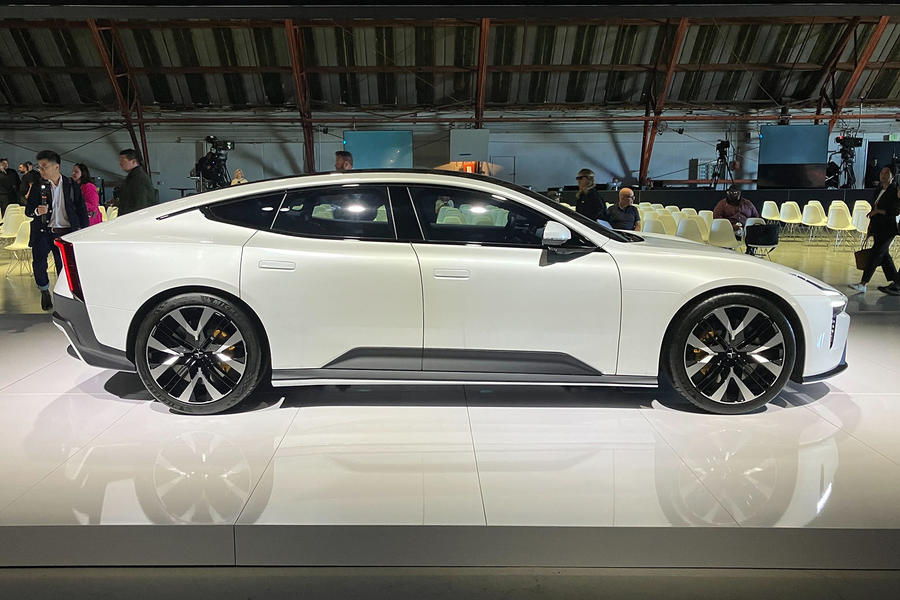
This technology, called extreme fast charging (XFC), is a collaboration between Polestar and StoreDot, a charging company that Polestar has invested in who pioneered XFC initially on a mobile phone that could be fully charged in five minutes. XFC can be integrated into existing battery technology and does not require “a battery pack design revolution”, according to Polestar.
The technology is currently in the test engineering phase and Polestar and StoreDot plan to be able to demonstrate it in 2024 on a full-size working 5 prototype.
“StoreDot’s pioneering extreme fast charging batteries, combined with our upcoming top-of-the-line electric powertrain, can revolutionise the ownership experience for EV owners with the ability to recharge in minutes,” said Polestar CEO Thomas Ingenlath.
Polestar has confirmed a power output for the 5 of 874bhp and 663lb ft of torque from its twin electric motors for four-wheel drive. The more powerful rear motor produces 604bhp alone and the electric architecture is 800V.
Ingenlath described the 5 as a “company-defining project”. “Its progressive design and advanced engineering set the tone for Polestar’s future,” he said. “We have great talent on board enabling us to create truly iconic EVs.”
The 5 is an evolution of 2020’s imposing Precept concept. Only the concept’s most outlandish features – its heavily accentuated side creases, ultra-slim digital wing mirrors, reverse-opening rear doors and oversized alloy wheels – look to have been casualties of the homologation process.
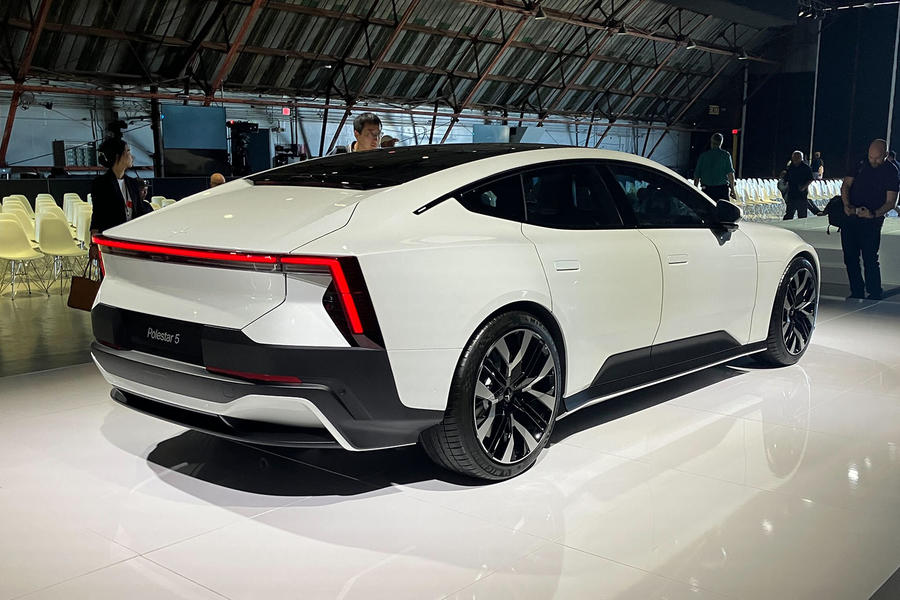
Polestar has previously confirmed its saloon flagship will get “supercar levels” of body stiffness from the all-new platform, which will also be the lightest in its class.
The 5’s body is constructed chiefly from bonded aluminium, with other sections made from hot-formed, cold-formed, die-cast and extruded aluminium. It’s this bonded aluminium construction that affords the car “supercar levels of torsional stiffness, which is fundamental to class-leading ride and handling dynamics”, said Polestar UK chief engineer Dave Kane. The battery pack, the size of which has not yet been specified, is then integrated into the platform.
UK R&D boss Pete Allen added that a goal for the 5 is to “deliver best-in-class levels of dynamics, and that starts with the structure”. To that end, the 5’s body offers “carbonfibre levels of torsional stiffness, like a two-door sports model”.
The Taycan is an obvious rival to the 5, and Polestar is understood to have one at its MIRA facility for benchmarking purposes. However, the Swedish manufacturer wants to create a car with more everyday compliance and a rounded edge, rather than chasing truly sports car-like handling.
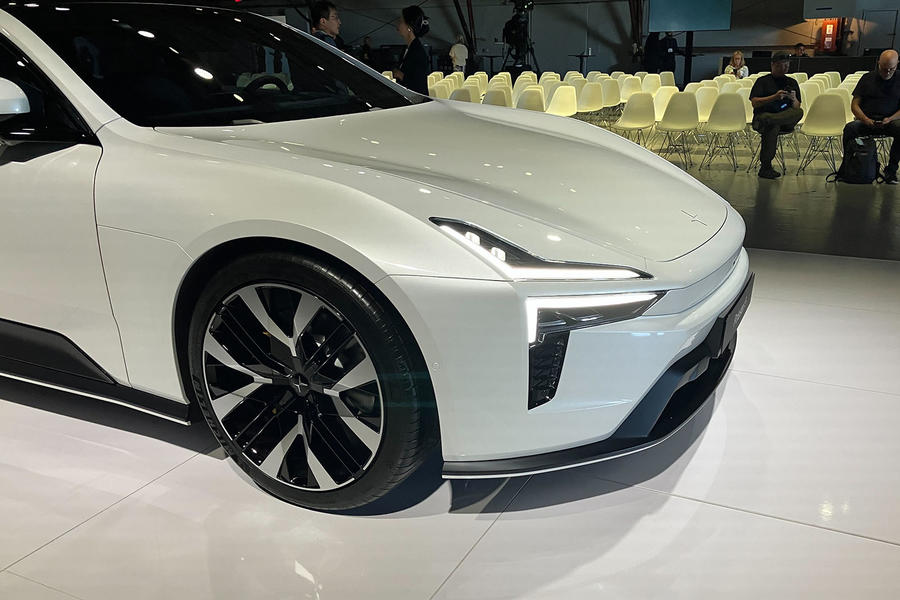
“It needs to be engaging but also comfortable,” said Swift. “We can push the car in a dynamic direction or a comfort direction without totally sacrificing one or the other.”
Further developments include motorsport-derived underbody aerodynamics and a slippery body shape.
“It’s an extremely low car [for an electric car],” said Allen. “Not as low as an internal- combustion-engine car but close, and they don’t have batteries underneath. That has been a particular challenge.”
Much of the engineering work on the 5 is being done with future Polestar products in mind. There’s “a lot of scalability” in the new platform, said Swift. “You start with a car first, then look at the products in other spaces, then how many of those spaces we can play in while designing it once. It’s part of the future, definitely.”
The 6 will be the second model to be built on the new architecture, and the two will be built alongside one another in the same factory from 2026 when the 6 launches. The 5 arrives in 2025.
First ride: Polestar 5 Prototype review
As a means of getting familiar with an all-new car, passenger rides are a bit of a blunt instrument. But sometimes the car in question does something so novel, and does it so effortlessly, that it doesn’t matter which seat you’re sitting in because the cat’s just as far out of the bag.
This is what happens during our passenger ride in a leggy, pre-production Polestar 5 on the Dunlop dry handling circuit at the MIRA proving ground – a circuit Autocar road testers know quite well because it’s where we set the magazine’s benchmarking lap times.
After some chit-chat about the Porsche Taycan-rivalling 5 being “an opportunity to mature the Polestar brand” in dynamic terms, the project’s principal vehicle dynamics engineer – 31-year-old Chris Baguley – without warning delicately backs its low, camouflaged form into one of the course’s two inviting hairpin bends, unsticks the back axle with an injection of torque and then rides out an enormous, graceful powerslide.
To onlookers, the sight would be akin to what you’d get if you parsed a fully lit ‘E39’ BMW M5 through Syd Mead’s imagination. More to the point, it’s the kind of antic that flies in the face of the controlled but po-faced dynamic identity Polestar has so far shown with the superb-looking but transverse-engined 1 PHEV and the Volvo XC40-based 2 EV.
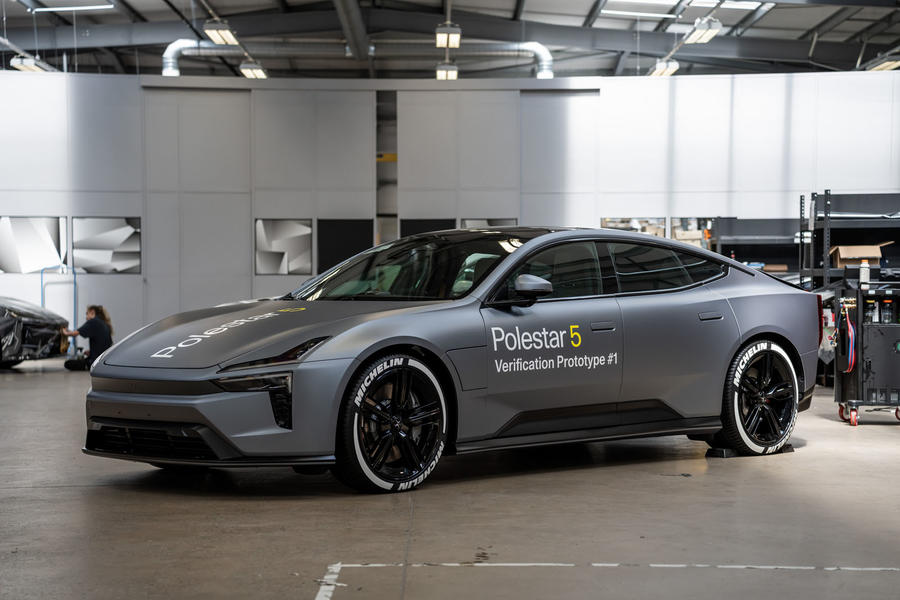
Getting something so rippling with torque, and with such a long wheelbase, to behave like this isn’t hard, but what’s surprising – and noticeable even from the passenger seat – is the sense of finesse. Pedigree, even.
Perhaps this isn’t too surprising, either, given the 5 is being developed not from an existing Volvo platform at Polestar HQ in Gothenburg, or in China, where it’ll be assembled. Instead, it’s being brought to life here at MIRA, from scratch, by a predominantly British team of engineers with backgrounds at Lotus and McLaren, among other AAA-grade handling schools – and it shows.
The way the 5’s tail moves out of line then slips back in is, sorry for the cliché, buttery. This purely rear-driven example also seems the forgiving sort. Baguley can boot it mid-corner, when we’re already very sideways, and on its bespoke Michelins the 5 – sustaining yaw all the way – punches out of medium-speed bends at a rate you’d be happy even were you not frittering drive away by showboating. The 5 feels hooked up, composed, and on the way into bends resists understeer better than expected.
Concrete technical details about the 5 are currently scarce and will remain so until we’re closer to the car’s 2025-model-year launch. However, beyond a BMW M-car-esque penchant for oversteer, our passenger ride unearths some intriguing elements as well as giving a fair glimpse of the car’s broader character. One unexpected thing is that the 5 will ride on a passive suspension set-up – no, no air springs here, or even selectable modes.
This feels like a big call for a car with what will surely be a six-figure price, though on the far from smooth Dunlop circuit, the 5 does show a natural poise with good suppleness. Potholes and poor roads will be harder to subdue.
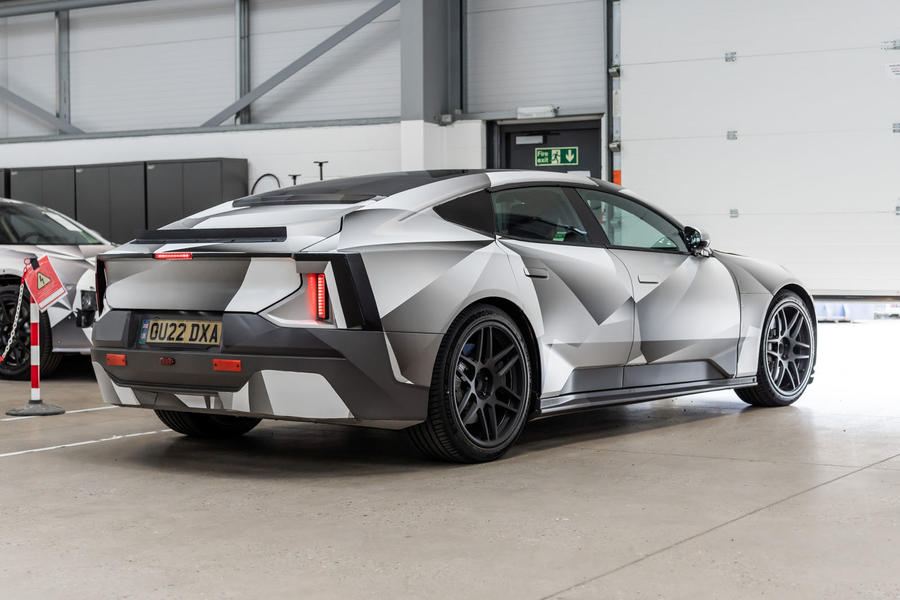
Next up is rear passenger space, which is enormous. Honestly, in the back the Polestar makes the Taycan feel like a Volkswagen Lupo, and not just in terms of leg room but also in terms of atmosphere. The glass canopy is vast and visibility through the front of the cabin, then out of the massively raked windscreen, is excellent.
If – if – the car’s ride quality at MIRA translates onto public roads and is matched with fine isolation (at MIRA the pared-back cabin of our development car is predictably whiney and roar-y at speed) the 5 will be a class act. Special mention also goes to the low dash scuttle: up front there’s just a touch of supercar to the ambience.
I just hope the steering is up to the mark. In this area, Polestar’s efforts so far have been lacklustre, but clearly the 5 is like no other Polestar so far.
Will it really stand up to the outstanding Taycan? On this evidence, quite possibly. The mechanical recipe is disarmingly simple – no air springs, or rear steering, no active anti-roll bars, and in this case just one driven axle – but clearly it’s all very deftly tuned. There’s something appealingly old-school about this method, though the aesthetic will be anything but.
As Baguley puts it: “We want to challenge the Taycan in this space – to do something differently and prove that a bit of a refresh is not always a bad thing.”
By Richard Lane
Source: Autocar
